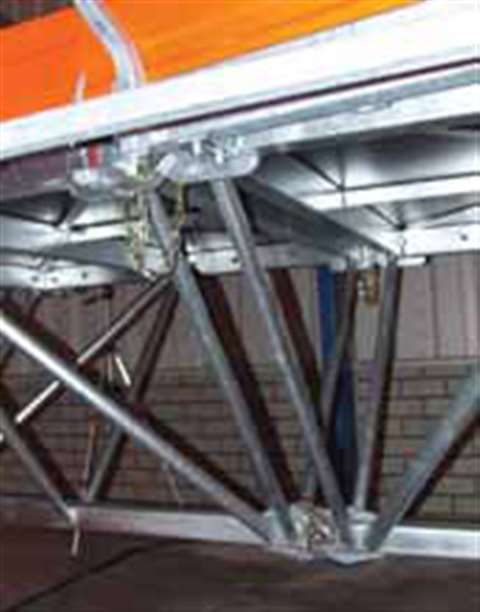Big deals
10 April 2008

When the breadth and depth of the design differences in Hek's new mast climbers and transport platforms sink in, one word that comes to mind is “revolutionary”. However, president Ernst van Hek, speaking to AI, used the term with some reservation; “For our industry, it is fairly revolutionary, but the rack and pinion is still the heart of the machines.”
However, the rack and pinion drive concept is about all that remains from Hek's earlier designs. The company, part of the Alimak Hek Group of Sweden, clearly emphasises the concept of the design's modularity. That term applies within each of the ranges –light, medium, and heavy (the last of these to be launched in June 2008) – and across them, as well. Basic components of ground frames, masts, and the drive unit combine to form the eight new types of work and transport platforms.
The rack and pinion, drive motors, fail-safe brake, variable frequency controller, and system controller are common across all models. That commonality has many benefits. One is Hek's clear objective to reduce user operating costs. “A selection criteria for our vendors was: can you supply anywhere in the world?” said Mr van Hek.
Three masts, the L-350 (light), M-450 (medium), and H-650 (heavy), are the bases for the three ranges. A, B, or TP adaptors allow either of two, 90°-different orientations of drives to masts, as well as multiple drives on one mast. Consequently, erectors can place different combinations of hoist and work platforms onto the adaptors, creating a variety of machines that can operate independently, across multiple masts. In other words: modularity.
The rack and pinion concept may still be the “heart” of Hek's latest products, but its new drive unit – common across the entire range – is the muscle. Central to the drive unit are high-torque, high capacity, helical-bevel geared, 15 kW motors from Nord in Germany.
Each motor, along with gears and bearings, is integrated in a single, machined block, whose sealing surfaces are not subject to radial forces. Consequently, units are lighter, more robust, longer-lived, and they don't leak, according to Nord.
The drives are high-torque; they can hold fully loaded platforms at rest without braking. In fact, brakes are used only to hold the platforms once stopped, not to bring them to a halt. Hence, brake wear is almost zero, says Hek.
Such benefits are part of Hek's efforts to reduce rack-and-pinion equipment acquisition and operating costs, and Hek is still preparing some of the sales tools to drive home the significance of anticipated user benefits. In a recent study, Hek simulated the replacement of the current fleet of a Dutch rental company with equivalent units from its new line during the most recent year of rental operations.
Its findings indicate that 180 new machines – 15% fewer than the 210 machines actually in the fleet – would have given the same rental services. Also, utilisation would have been 83% instead of the actual 71%.
Of course, as Mark Bednall, business development manager for Hek's used equipment activities told AI, “Users [of the new equipment] will have to change their operating concept. In the past, users received the machine and kept it more or less intact as is.”
The first production units, 35 HEK MCM's, were delivered to Hunnebeck Danmark in mid-November. Follow-on units will go in December to Japan and the Middle East, a market Hek expects to grow strongly (see box story).
Hek expects transport platforms, whose use is rapidly growing worldwide, to become 50% of sales of the new line. However, “The heavy range will open up completely new markets for us,” said Mr van Hek. Alluding to the 6000 kg capacity of its biggest models, he told AI, “We think contractors will use our new hoists to lift things that only cranes now do.”
Those are the changes that Mr van Hek might just consider revolutionary.




